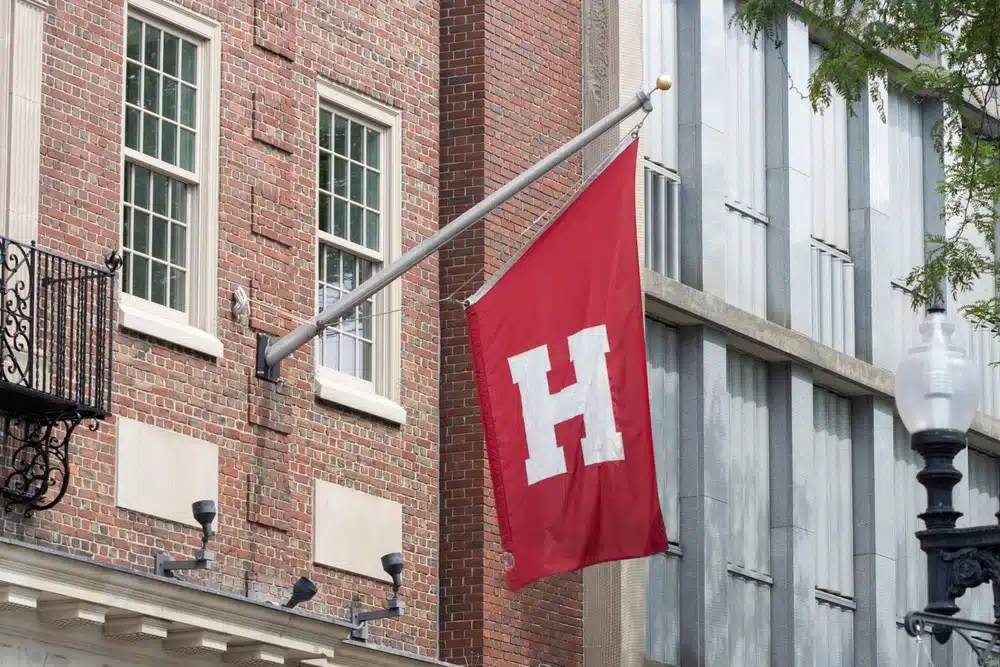Harvard Waitlist Acceptance Rate: Stats and Tips
It’s important to get a handle on the acceptance rate for waitlisted applicants at Harvard to keep your expectations in check. Harvard recently shared that its overall acceptance rate is just 3.4%, underscoring how tough the competition is—even for those on the waitlist.
This piece is here to help you out. We’re going to look at what the waitlist acceptance rates really are at Harvard and give you practical advice to boost your odds of getting in.
What Is Harvard’s Waitlist Acceptance Rate?
Finding exact numbers for Harvard’s waitlist acceptance rate is tricky because they don’t always share this data. But we can get a rough idea from what’s out there.
In some years, Harvard hasn’t taken anyone from the waitlist, which can feel a bit daunting. But then there are times when around 200 waitlisted students get the green light, which shows just how unpredictable this can be.
With the overall acceptance rate at a tight 3.4%, it’s clear: the fight for a spot is intense, even for those on the waitlist.
Grasping these ups and downs is key. It means while there’s always a chance, the reality of getting off the Harvard waitlist varies widely, highlighting just how competitive it really is.
What Does It Mean to Be on Harvard’s Waitlist?
Being on Harvard’s waitlist means you’ve hit their high standards but just didn’t clinch a spot right away because of limited space. You’re in a waiting game, with a shot at getting in as spots open up.
Harvard uses the waitlist to fine-tune its class size and mix, aiming for a group that’s both diverse and well-rounded. This helps them fill gaps when accepted students decide to head elsewhere.
How Does Harvard Approach Its Waitlist?
So, how does Harvard handle its waitlist? Well, they keep the specifics under wraps, which adds to the mystery of it all. If you’re waitlisted, you’ll hear from them by email with steps on how to stay in the running.
Picking who gets off the waitlist isn’t a roll of the dice. Harvard looks at what the incoming class needs—maybe it’s someone with a unique academic focus, standout extracurricular achievements, or representation from a certain region.
Why You Might Have Been Waitlisted by Harvard
Harvard waitlists applicants based on institutional and individual factors. Here are the five main ones:
1. Class size management
Harvard carefully plans its class size to keep the learning environment top-notch and make sure there are enough resources for everyone. This need to balance things out affects who gets off the waitlist, as Harvard watches who’s coming and who’s not, then makes calls to waitlisted students as needed.
This strategy ensures Harvard keeps its rep for quality education but also means some really strong candidates might end up waiting for a spot because of these practical limits.
2. Diversity goals
Harvard’s goal for a diverse classroom is a big factor in waitlist decisions. They’re looking for a mix of backgrounds, interests, and viewpoints to make the learning richer and get students ready for a world that’s connected more than ever.
To hit this target, admissions might keep some applicants on standby until they see what the confirmed class looks like. They use the waitlist to patch any diversity holes, which plays into waitlisted students’ chances.
3. Yield rate uncertainties
The yield rate, or how many accepted students actually sign up, can throw a wrench into waitlist plans. Even with Harvard’s allure, the number can swing, affecting how many from the waitlist get in.
Guessing this number right is tough, even for Harvard, making it tricky to decide how many to waitlist and eventually admit. This uncertainty shapes the whole waitlist acceptance scene.
4. Strength of the applicant pool
The overall strength of the people applying each year plays a huge role in who gets waitlisted. In years when the pool is especially strong, even top-notch applications might not stand out enough for an immediate yes, leading to a waitlist spot instead.
This variability really shows how tough getting into Harvard is. It also means if you’re waitlisted, it’s not a knock on your skills but more about how you stack up in that year’s group of applicants.
5. Gaps in your application
If there are any weak points in your application, that might land you on the waitlist. Harvard is on the lookout for candidates who shine across the board. Even minor misses in grades, extracurriculars, or essays could tip the scales in such a competitive setting.
This attention to detail means some incredibly capable students might have to wait for a yes. But being on the waitlist gives the admissions team a chance to take another look if more seats open up, giving you another shot at getting in.
What to Do if You’re Waitlisted by Harvard
If you find yourself on Harvard’s waitlist, there are strategic steps you can take to improve your chances of admission:
1. Write a letter of continued interest.
Sending a letter of continued interest is a powerful way to boost your waitlist standing. It shows Harvard you’re still all in and would jump at the chance to attend. Keep this letter sharp and to the point, updating them on any new developments since you applied.
In your letter, make it clear why Harvard is still your number one pick, linking their specific programs or opportunities directly to your goals. This attention to detail proves you’re not just interested but invested in what Harvard has to offer.
But remember, don’t bombard the admissions office. One well-crafted letter is your chance to shine, showcasing genuine interest and any recent successes that make you an even better candidate.
2. Update Harvard on any significant achievements.
Letting Harvard know about any big wins since you applied could tip the scales in your favor. Got a new award, leadership position, or project under your belt? These highlights can underline your upward trajectory and what you’d bring to Harvard.
Make sure these updates are significant and tie back to your application story. It’s not about quantity but quality—showing how you’ve pushed forward since you last touched base.
Fold these achievements into your letter of continued interest or through the official channels for waitlisted folks. It’s your chance to remind the admissions folks of your relentless drive and fit for Harvard.
3. Request an additional letter of recommendation.
Adding a fresh letter of recommendation can give the admissions committee new insights into who you are now, especially any growth or achievements since you first applied. Pick someone who’s seen your recent progress, maybe in an academic setting or through extracurricular activities.
This letter should bring something new to the table, shedding light on different parts of your personality, skills, and accomplishments. A well-chosen recommendation can highlight why you’re ready for everything Harvard has to offer.
Guide your recommender on which qualities or achievements might be most impactful to emphasize. This way, the letter not only adds to your application but also supports your push to move off the waitlist.
4. Engage with the university’s admissions events.
Showing up for Harvard’s admissions events, like webinars or campus tours, can be a great way to show how much you want to be there. It’s your chance to dive deeper into what Harvard’s about and show the admissions team your enthusiasm.
These events are more an opportunity to weave your experiences into conversations with the admissions office, showing them you’re engaged and curious. But remember, the key here is to be genuine. Real interest and smart questions will make a bigger impact than just showing up.
This approach can help you leave a lasting impression, potentially making a difference in your waitlist status.
5. Stay academically strong and involved in extracurricular activities.
While you’re on the waitlist, it’s vital to stay sharp academically and keep up with your extracurricular activities. Keeping your grades up proves you’re ready for Harvard’s challenging courses. Being active in your hobbies or clubs shows you’re a leader who’s engaged with your community.
Share these accomplishments with the admissions office. It’s a way to show off your hard work and how you’ve geared up for the challenges Harvard throws your way, making a stronger case for your acceptance.
Plus, staying on top of these areas means you’re all set, no matter what happens. Whether you get into Harvard or head somewhere else, you’re laying a solid groundwork for future success.
6. Consider and prepare for plan B options.
Thinking about and getting ready for other paths is smart when you’re waitlisted. Hope for the best at Harvard, but also look at other schools or opportunities. This isn’t about giving up; it’s about being smart and keeping your future bright, no matter what.
Dive into what other colleges offer, especially if they’ve already said yes or you’re thinking of applying. How do their programs, vibe, and chances to shine match what you’re after? This doesn’t mean you’re less interested in Harvard. It shows you’re thoughtful about your education and future.
Plus, if Harvard doesn’t pan out, you’re not stuck. You’ve got plans that keep you moving toward your goals, showing resilience and forward thinking. This mindset benefits you, wherever your academic journey goes.
How to Handle Harvard Waitlist Rejection
If you face rejection from Harvard’s waitlist, it’s important to handle the situation with resilience and a forward-looking mindset. Here are five steps to process and move forward:
1. Allow yourself to feel disappointed.
Feeling disappointed after a setback is part of the journey. It’s perfectly normal to take some time to process these emotions and acknowledge the hard work you put into trying for a spot at Harvard. Recognizing your feelings is crucial for healing and moving on.
Remember, not making it off the Harvard waitlist doesn’t say anything about your value or future success. Every year’s application pool is different, and many factors out of your hands can affect the outcome. Embrace your resilience and start thinking about what’s next with a positive attitude.
2. Reflect on your application.
Reviewing your application is a chance to grow. Look over your essays, letters of recommendation, and extracurricular activities critically. Figuring out where you can improve is a powerful step and can shape how you tackle future applications or challenges.
This isn’t about regretting past choices but getting ready to knock it out of the park next time. This kind of self-review can boost your growth and make your future applications even stronger.
3. Seek feedback.
Asking for feedback is a smart move. While Harvard might not give details on their waitlist decisions, people like mentors, teachers, or counselors can provide valuable input. They know you and your application and can offer insights on where you can do better.
Hearing this advice might be tough, but it’s incredibly useful. It gives you specific areas to work on, helping you improve your game for the next round of applications or any future plans, making you more resilient and adaptable.
4. Explore other opportunities.
Exploring new paths can reveal opportunities and insights you hadn’t thought about. Whether it’s other colleges that have offered you a place, taking a gap year, or finding internships, each option has its own set of valuable experiences and lessons that can shape your personal and academic journey.
This step is about seeing the big picture and recognizing that there’s a world of possibilities out there, beyond Harvard. Diving into different communities and learning environments can deepen your understanding of the world and yourself, opening up paths to new passions and careers that resonate with your aspirations and objectives.
5. Plan your next steps with optimism.
Mapping out your next steps with hope means setting your sights on new objectives and figuring out how to reach them. Focus on the future, armed with the lessons learned from your application journey. This might mean giving college applications another go, diving into new activities, or strengthening your academic credentials.
An optimistic approach can turn a setback into a stepping stone for future triumphs. By concentrating on what you can do next and keeping a positive view, you’re not just gearing up for another shot at your dreams; you’re also cultivating resilience that will stand you in good stead for life’s challenges.
Is It Impressive to Get Waitlisted by Harvard?
Landing on Harvard’s waitlist is a testament to the strength of your application. It means you stood out in an incredibly competitive field. However, it’s crucial to stay grounded about the chances of moving off the waitlist due to the intense competition.
Feel proud of making it this far, but also keep your options open and prepare for various outcomes. It’s good to hold onto hope, but equally important to have a solid plan for exploring other avenues.
Does Harvard Rank Students on Waitlist?
Harvard doesn’t rank its waitlisted students. Instead, they fill spots based on what the incoming class needs at the moment, without following a set order. This approach gives them the flexibility to build a diverse and well-rounded class but can leave waitlisted students wondering about their odds of getting in.
When Will Harvard Release the Waitlist Admission Decision?
Harvard usually notifies waitlisted students by mid-May. This timing allows them to see how many spots are available after the initial acceptances are confirmed. If you’re on the waitlist, keep an eye on your email around then for any news or next steps from the admissions team.
Conclusion
The whole process with Harvard’s waitlist and understanding the acceptance rates can feel overwhelming, but with the right info and tactics, you can navigate it wisely. Remember, your worth and potential are not defined by any single decision.
If you find yourself facing a waitlist or rejection, it’s a chance to tap into your resilience. Let this challenge polish your strengths and goals. There’s a world of opportunity ahead, waiting for your initiative and hard work to shape it.










































